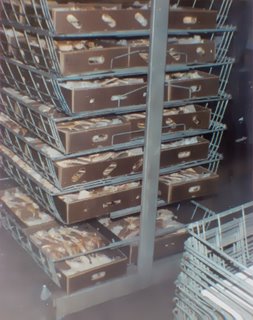Kodiak king crab, oyster prices

The start of the king crab fishery in Alaska was defined by the activities of Lowell Wakefield, the pioneering processor. The locals on Kodiak Island were such a breed that they didn't know they weren't supposed to fish in such rough seas either. And they had a knack for finding their way out to their pots and getting back the same way, in a sort of a low tech way.
Blast frozen tanners for the Japanese market in the little plant I ran in Juneau. The few king crab we got in partly went to provide some legislative functions with top eats.
Along comes the Alaska King Crab Marketing and Quality Control Board, of which my father was a founding member, and the fishery was off and running. In a previous post I described how the Board, at my father's suggestion, went with Frank Horsley's ad agency in Seattle instead of Lowell's ad men from Chicago. And thus the foundation for the Alaska Seafood Marketing Institute was laid.
Funny things were happening, like a U. of W. grad student studying the parasites on the underside of the female king crab. Some thought that was the most mundane thing imaginable to be studyiing in the early '70s. Turns out it might have been a very important thing to be studying. Here's an article on a current effort to find out what happened to the stocks. Not that the forces of harvesting and processing a mother lode would have slowed down to listen to any bad news.
My father got on the King Crab Board because he was gearing up and sending out boats to commercialize the Southeast Alaska king crab stocks. One of the boats he sent out launched the pots into too deep of water for the bouy lines, and that was the end of that boat's participation. But the participation of those pots went on and on. The learning curve for skippers was steep in those days.
Here's an article on the oyster business. Seems like the fortunes of the Washington oystermen have taken a serious turn for the better since Katrina wiped out most of the oyster beds in the Deep South. It'll be some years before reseeding will result in a harvestable crop down there. In the meantime consumers will have to pay dearly for oysters or switch to other kinds of shellfish.


0 Comments:
Post a Comment
<< Home